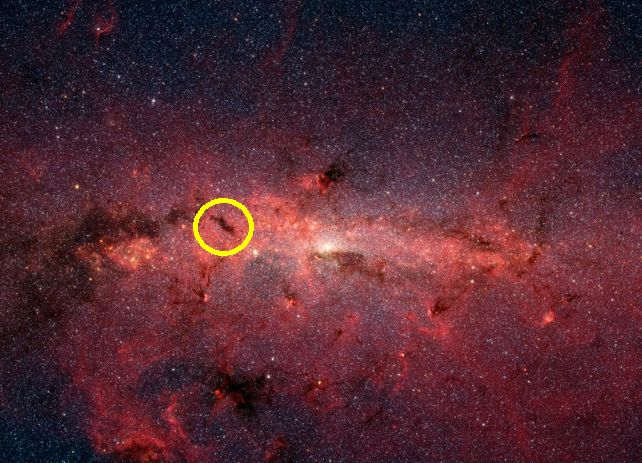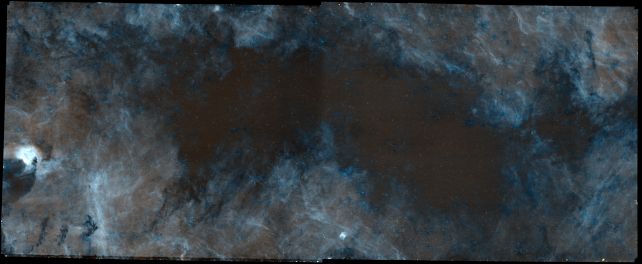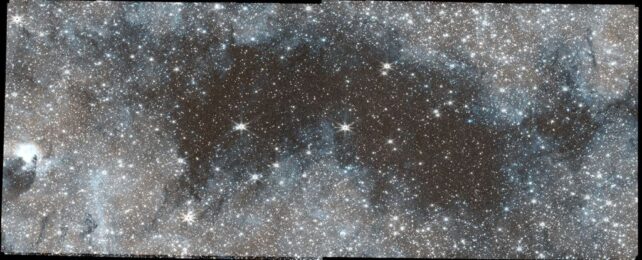The mysterious guts of a dense, dark cloud in the heart of the Milky Way are finally being revealed.
Using the James Webb Space Telescope, a team of astronomers led by Adam Ginsburg of the University of Florida has managed to peer inside a cloud named G0.253+0.016 – more colloquially known as The Brick because it is so dark and dense and opaque.
And what the researchers found there presents a bit of a pickle – because it's at odds with what we understand about how these clouds work.
This, in turn, means we may need to rethink our understanding of star formation, the team says.

The center of the Milky Way is an odd sort of place. On the one hand, there's that supermassive black hole, smack-bang in the middle. That environment is wild, thanks to the black hole and its gravity.
But around the black hole is a region densely populated with really thick molecular clouds. This is known as the Central Molecular Zone, and it's kind of like the smoggy capital of the Milky Way: the molecular gas density there is several orders of magnitude greater than it is in the disk of the galaxy.
This is really interesting to astronomers, because thick molecular gas is the stuff from which stars form. Overdensities in cold clouds of it collapse under gravity to form the seeds of stars, which grow by pulling more material from the surrounding cloud.
There's just one problem. These clouds are really, super thick – so thick that it's impossible, in most wavelengths, to see what's inside them.
The Brick is one particularly egregious example. It's one of the densest molecular clouds in the Milky Way. But the JWST has a superpower. It sees the Universe in infrared light – and that's the wavelength range that can penetrate thick clouds of dust and gas where shorter wavelengths scatter.
So Ginsburg and his team turned the telescope's golden honeycomb eye to the galactic center, to gaze into the heart of The Brick.
And there, they found something they weren't expecting. Carbon monoxide (CO) ice. Absolute scads of the stuff. Significantly more than they had anticipated – suggesting that the Central Molecular Zone is rich with it.
"Our observations compellingly demonstrate that ice is very prevalent there, to the point that every observation in the future must take it into account," Ginsburg said.

The presence of so much CO ice suggests that The Brick should be forming stars; yet it isn't. In fact, the lack of star formation detected in the cloud has puzzled scientists previously, and several explanations have been proposed, including high turbulence and a relatively young age for the cloud itself.
Ginsburg and his colleagues found another explanation. Remember how we mentioned that stars form from cold gas? On the inside, The Brick is significantly warmer than other clouds like it. It's unclear why, but further investigations and analysis could yield some clues.
The CO abundance also suggests that both the amount of CO and the ratio of dust to gas (since CO ice binds to dust particles) have been previously significantly underestimated and under-accounted for in the galactic center.
This is just the first of the team's findings on the observations of The Brick conducted using the JWST. Work is ongoing, and Ginsburg and his colleagues hope they can find some answers soon.
"We don't know, for example, the relative amounts of CO, water, CO2, and complex molecules," Ginsburg says. "With spectroscopy, we can measure those and get some sense of how chemistry progresses over time in these clouds."
The research has been published in The Astrophysical Journal.
